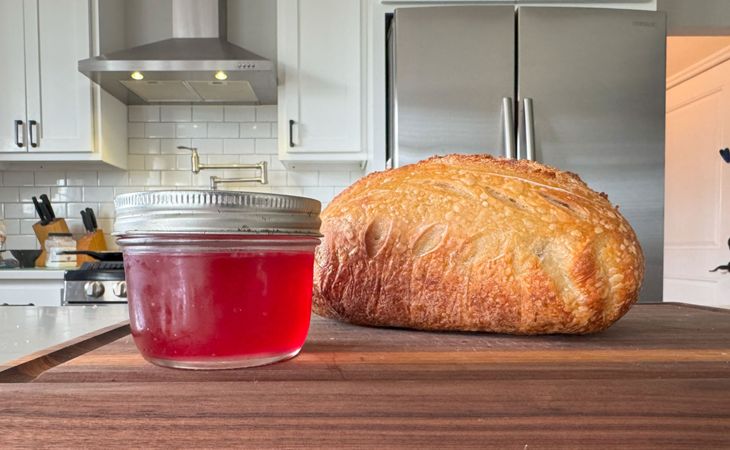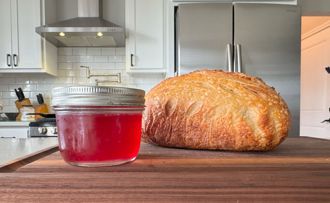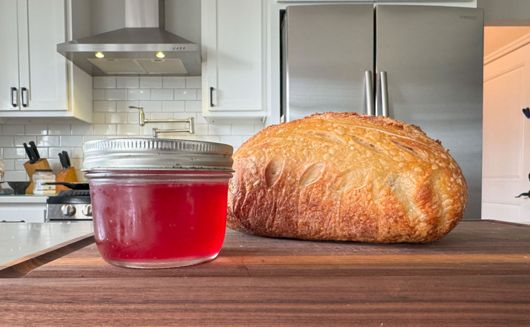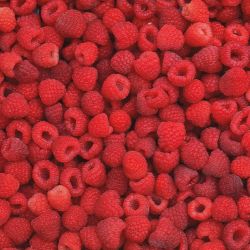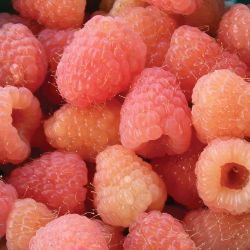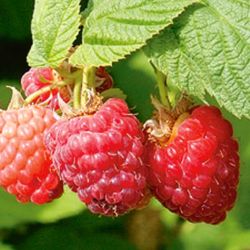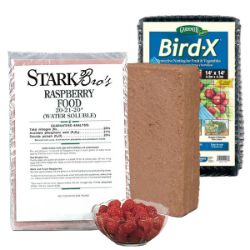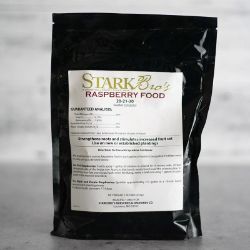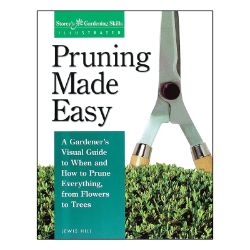Pest & Disease Control for Raspberry Plants
As with all living things, raspberry plants may experience issues as they grow, such as the presence of pests or diseases. Location, weather, and upkeep are factors that weigh in on which issues your raspberries encounter and how well they stands up to them. Determining potentially problematic issues in your area as well as routine maintenance* will help equip you to actively prevent most problems and keep your raspberry plants in good shape.
*Examples of good practices are: adequate watering, fertilizing as needed, seasonal pruning, preventative and active spraying, fall cleanup, and winter protection.
NOTE: This is part 7 in a series of 11 articles. For a complete background on how to grow raspberry plants, we recommend starting from the beginning.
The following issues are merely intended as a means of identification. Don’t be alarmed – raspberry plants may experience a few of these in their lifetime, but certainly not all at once.
Raspberry Plant Pests
Aphids
Tiny, pinhead-sized insects, varying in color depending on the type. Will cluster on stems and under leaves, sucking plant juices. Note: ants will “farm” aphids for their honeydew excretion, so ants may also be a sign of an aphid infestation.
Symptoms: Leaves curl, thicken, yellow, and die. Aphids produce large amounts of a sticky residue called “honeydew” that attracts insects like ants. Honeydew becomes a growth medium for sooty mold.
Control: Spray
- GardenTech® Sevin® Concentrate Bug Killer
Control: Natural Spray
- Monterey Fruit Tree Spray Plus
- Monterey Horticultural Oil
- Safer® Brand Insect Killing Soap
- Monterey Horticultural Oil
Other Control Options
- Beneficials like ladybugs (both adult beetles and their larvae) feed on aphids.
Cane Borer
Adult is a long-antennaed beetle with a black head and yellow-orange body around 1/2-inch in length. Larvae are grub-like borers with light-colored bodies and can be about 3/4-inch long. Adult females lay eggs in the top 6 inches of raspberry canes, which hatch and grubs emerge inside the cane, making their way down into the soil over a period of a couple years.
Symptoms: Larvae indicated by sawdust. Canes may bulge and die back when pest is present.
Control: Spray
- GardenTech® Sevin® Concentrate Bug Killer
Control: Natural Spray
- Hi-Yield® Vegetable & Ornamental Insect Control
- Monterey Fruit Tree Spray Plus
Other Control Options
- Cut out infected cane until larvae is found; eliminate.
- Consistent pruning should disrupt borer life cycle enough to avoid having to spray.
- Contact local county cooperative Extension for further advice.
Fruitworm (Raspberry Beetle)
Adult (raspberry beetle) is red-brown beetle, 1/4-inch long, which overwinters in the soil and emerges when the temperatures are ideal (usually in spring). Larvae (fruitworm) are small grubs; cream white with darker bands.
Symptoms: Adults make slits in flower buds and larvae feed on berries. Beetles feed on foliage and deposit eggs in the flower buds/blossoms. Fruitworm larvae feed within the fruit until it drops and they can move into the soil where they pupate and remain until emergence the following spring. Fruitworms can be positively identified when ripe fruit is removed. Signs of the small worm will appear within the open center of the raspberry fruit.
Control: Spray
- GardenTech® Sevin® Concentrate Bug Killer
Control: Natural Spray
- Hi-Yield® Vegetable & Ornamental Insect Control
- Natural Guard® Caterpillar Killer Spray w/BT
Japanese Beetle
Adult is a metallic-green beetle, which skeletonizes leaves. Larvae are cream-colored grubs that feed on turf roots prior to maturity. Turf pest-control may help reduce grub populations; check turf product labels for timing and control of grubs.
Symptoms: Adults are often seen in groups – large infestations can cause stunted growth and stress by skeletonizing a majority of the leaves.
Control: Spray
- GardenTech® Sevin® Concentrate Bug Killer
Control: Natural Spray
- Hi-Yield® Vegetable & Ornamental Insect Control
Other Control Options
- Manual Removal: If infestation is minimal, knock Japanese beetles into a jar of soapy water solution (they will become immobile when frightened as a defense mechanism).
- Traps are an option for luring adult beetles.
Leafhopper
Small, active, slender-winged insect appearing in various colors. Usually found on undersides of leaves.
Symptoms: Slows new growth; leaves become whitened, stippled, or mottled. Leaf tips may wither and die. Prone to carrying diseases to and from plants and trees; damaged caused by leafhoppers may be greater than the feeding done directly by the insect.
Control: Spray
- GardenTech® Sevin® Concentrate Bug Killer
Control: Natural Spray
- Safer® Brand Insect Killing Soap
- Monterey Fruit Tree Spray Plus
- Monterey Horticultural Oil
Mites
Pinpoint-sized arthropods, appearing in many different colors depending on the type. Often found on undersides of leaves.
Symptoms: Sap feeding causes a bronze appearance in leaves. Severe infestations exhibit some silken webbing. Droughts or dry spells are advantageous for mite infestations.
Control: Spray
- GardenTech® Sevin® Concentrate Bug Killer
Control: Natural Spray
- Safer® Brand Insect Killing Soap
- Monterey Fruit Tree Spray Plus
- Monterey Horticultural Oil
Omnivorous Leafroller
Adult is bell shaped, blackish gray snout-like mouthparts, forewings dark rusty brown with tan tips. Over winters in larval stage in mummified berries, in weeds and other trash. Moths emerge in spring and lay egg masses on leaves. Eggs hatch in 5 days and larvae tie two young leaves together to form nest in which they feed. Later nests can be found in flower clusters and in bunches. Damage is not only from feeding on leaves, flowers, and berries, but also in feeding sites which allow other organisms to enter and rot fruit.
Symptoms: Leaves are rolled and webbed together where grubs feed. Foliage eventually becomes skeletonized with prolonged exposure to feeding.
Control: Spray
- GardenTech® Sevin® Concentrate Bug Killer
Control: Natural Spray
- Hi-Yield® Vegetable & Ornamental Insect Control
- Natural Guard® Neem
- Natural Guard® Caterpillar Killer Spray w/BT
- Monterey Fruit Tree Spray Plus
- Monterey Horticultural Oil
Rose Chafer
Beetle has 1/2-inch long, tan wings with reddish-brown edges and long, thin hairy legs. Can be toxic to birds and small animals if eaten.
Symptoms: Skeletonized leaves and flowers. Holes in buds and fruit. Present in large quantities in early summer months (June and July), especially on sandy sites near grassy areas.
Control: Spray
- GardenTech® Sevin® Concentrate Bug Killer
Thrips
Tiny, slender, fringed-wing insects ranging from 1/25-inch to 1/8-inch long. Nymphs are pale yellow and highly active. Adults are usually black or yellow-brown, but may have red, black, or white markings.
Symptoms: Feeding occurs on vegetation by puncturing and sucking up the contents causing appearance to be deformed or discolored (similar to damage by mites and lace bugs).
Control: Spray
- GardenTech® Sevin® Concentrate Bug Killer
Control: Natural Spray
- Hi-Yield® Vegetable & Ornamental Insect Control
- Natural Guard® Neem
- Natural Guard® Caterpillar Killer Spray w/BT
- Monterey Fruit Tree Spray Plus
- Monterey Horticultural Oil
- Safer® Brand Insect Killing Soap
Raspberry Plant Diseases
Anthracnose (Spot Anthracnose)
Caused by Elsinoe venata – a fungus that is spread by splashing rain or irrigation. Thrives in warm, wet weather (typically late spring/early summer). Overwinters in lesions on old canes. Commonly found on black raspberry and susceptible red raspberry plants, especially where disease pressure is high. Can be spread to new/healthy raspberry plants from nearby infected plants.
Symptoms: Reddish-brown sunken spots with purple margins and light gray centers on young shoots. Lesions are distributed throughout canes on sections between where the leaves are located. Spots grow together into cankers. Leaves may drop early. Fruit may dry up. May cause winter dieback.
Control: Natural Spray
- Monterey Horticultural Oil
- Monterey Fruit Tree Spray Plus
- Monterey Liquid Copper Fungicide
- Natural Guard® Neem
Other Control Options
- Remove and destroy old fruiting canes after harvest.
- Maintain growing site. Pruned to improve air circulation, avoid overhead watering, keep area free of weeds.
Botrytis Fruit Rot (Gray Mold)
Caused by Botrytis cinerea – a fungus that overwinters in mummified fruit and infected plant debris. Spreads easily in early spring and thrives in warm, wet weather and even periods of prolonged cool, wet weather.
Symptoms: Presents as a gray, hairy mold which decays blossoms, green and ripening fruits, and harvested fruits. Infection may occur early in the season while symptoms may not be obvious until harvest time.
Control: Spray
- Hi-Yield® Captan 50W Fungicide
Other Control Options
- Remove and destroy old fruiting canes after harvest. Do not leave mummified fruit in or around the growing area.
- Maintain growing site. Pruned to improve air circulation, avoid overhead watering, keep area free of weeds.
- Contact local county cooperative Extension for further advice.
Cane Blight
Caused by Leptosphaeria coniothyrium – a fungus that is spread by splashing rain or irrigation. Thrives in warm, wet weather (typically late spring/early summer). Enters through wounds made by insects, pruning cuts, canes rubbing against other canes/trellises, etc.
Symptoms: Large brown dead areas (cankers). Often first noticed when leaves wilt and wither.
Control: Natural Spray
- Monterey Horticultural Oil
- Monterey Fruit Tree Spray Plus
- Monterey Liquid Copper Fungicide
- Natural Guard® Neem
Other Control Options
- Cut canes back to below canker; disinfect shears between cuts; dispose of pruning debris.
- Remove and destroy old fruiting canes after harvest.
- Maintain growing site. Pruned to improve air circulation, avoid overhead watering, keep area free of weeds.
Leaf Curl
Caused by a virus spread by the small raspberry aphid, Aphis rubicola. Typically fatal to infected plants, which decline over 2 to 3 years.
Symptoms: Leaves thicken and curl much like they do with an aphid infestation only these leaves are small, dark green, and curl downward and inward. Starts as dull, yellow-green leaves on brittle, stunted shoots. As the disease worsens, plants become more stunted, less branched, and produce little-to-no fruit. Before fruit production ceases, it may be small, dry, and crumbly. Plant symptoms may resemble and be confused with herbicide injury so have sample tested to positively identify disease before taking action.
Other Control Options
- Prevent aphids spreading this incurable disease by covering your raspberry plantings with a fine mesh screen or garden netting.
- Plant black raspberry plants at least 75-100 feet away from other raspberry plants.
- Remove potentially susceptible/infected wild berries from the area.
- Remove known diseased plants.
- Contact local county cooperative Extension for positive identification of virus.
Mosaic
Caused by a virus complex consisting of black raspberry necrosis virus (BRNV), raspberry leaf mottle, raspberry leaf spot virus, and rubus yellow net virus (RYNV). Spread by the large raspberry aphid, Amophorophora agathonica. Black raspberry and purple raspberry plants and cultivars are more susceptible to this disease, which can then be transmitted to neighboring raspberry plants by aphids carrying the disease. This is why it is recommended that (susceptible) black raspberry plants in particular be planted away from other raspberry plants.
Symptoms: Fruit production is reduced and quality is lacking (dry and crumbly, flavorless berries). Leaves will thicken, curl, and display with mottled coloring where there may be dark green areas and bright green-to-yellow areas on same leaf. Leaves may also exhibit puckering. Some plants may have curled, blackened cane tips that die. Symptoms appear on new growth in cool spring and fall weather and may seem to disappear in warmer temperatures (like in summer). Even though symptoms may temporarily disappear, note that infected plants cannot be cured.
Other Control Options
- Prevent aphids spreading this incurable disease by covering your raspberry plantings with a fine mesh screen or garden netting.
- Plant black raspberry plants at least 75-100 feet away from other raspberry plants.
- Remove potentially susceptible/infected wild berries from the area.
- Remove known diseased plants.
- Contact local county cooperative Extension for positive identification of virus.
Orange Rust
Caused by Arthuriomyces peckianus – a fungus that works systemically throughout the plant and overwinters in diseased roots and canes. Thrives in cool, wet weather. In late spring/early summer (June or July), spores spread to nearby plants by wind. Spores enter through the leaves and spread internally to the canes and eventually the roots. Symptoms may not appear until the following spring in newly infected plants. Infected plants cannot be cured.
Symptoms: Undersides of leaves appear covered with orange-yellow spores. Weak, spindly growth appears in spring. Plants may have a short, bushy appearance. Disease may not prove fatal to infected raspberry plants, but it will stunt growth and can cause low-to-no fruit production. Not problematic for red raspberry plants but can be problematic for other types of raspberries (especially black raspberries).
Control Options
- Remove and destroy infected raspberry plants.
- Contact local county cooperative Extension for further advice.
Powdery Mildew
Caused by Sphaerotheca macularis (Podosphaera aphanis) – a fungus that overwinters in canes (tips) and buds and emerges during humid, cool-to-warm weather progressively throughout the growing season. Spreads by wind. Fungicide control sprays can be applied as symptoms appear, from summer to fall.
Symptoms: Whitish-gray powdery mold or felt-like patches on buds, young leaves, and canes. Leaves may crinkle and curl upward. New shoots are stunted.
Control: Natural Spray
- Monterey Fruit Tree Spray Plus
- Monterey Horticultural Oil
- Monterey Liquid Copper Fungicide
- Natural Guard® Neem
Other Control Options
- Clean up fallen leaves and other debris.
- Maintain growing site. Pruned to improve air circulation, avoid overhead watering, keep area free of weeds.
Spur Blight
Caused by Didyimella applanata – a fungus that is spread by wind, splashing rain, or irrigation. Thrives in warm, wet weather (typically late spring/early summer).
Symptoms: In late spring, purple or brown discoloration appears just below the leaf or bud, often on the lower areas of the canes where leaves emerge. Spots increase in size, expanding up and down the cane sometimes covering the area between the leaves but stops before reaches the next leaf or bud. Leaves may turn yellow and fall off. Overwinter in infected canes.
Control: Spray
- Hi-Yield® Vegetable & Ornamental Insect Control
Control: Natural Spray
- Monterey Horticultural Oil
- Monterey Fruit Tree Spray Plus
- Monterey Liquid Copper Fungicide
- Natural Guard® Neem
Other Control Options
- Remove and destroy old fruiting canes after harvest.
- Maintain growing site. Pruned to improve air circulation, avoid overhead watering, keep area free of weeds.
Other Raspberry Plant Issues
Crown Gall & Cane Gall
Caused by Agrobacterium tumifaciens (crown gall) and Agrobacterium rubi (cane gall) – each a bacterium that inhabits the soil and causes rapid, abnormal growths which then develop into galls. Crown galls can spread through injury to roots in the soil as well as through gardening tools carrying the bacterium. Cane galls may appear more frequently after harsh winters and winter injury.
Symptoms: Plants appear stunted and slow growing. Leaves may be reduced in size, plants may produce little or no fruit. Crown Galls – Not visible above ground, but symptoms may present as water stress and nutrient deficiency. If plant is dead, inspect roots for hard, woody tumors (galls). Cane Galls – White growths on canes in early summer. Growths turn brown or black as season progresses. Infected canes become poorly fruitful and brittle. Affects black and purple raspberries more frequently than red raspberries. Note: many things can cause stunted plants, so rule out other causes for proper diagnosis.
Other Control Options
- Contact local county cooperative Extension for further advice.
No Blossoms or Fruit
Symptoms: Raspberry plants can take about 1 to 2 years after planting (on average) before they bloom or bear fruit. Depending on the variety, flowers and fruit may appear on 1-year canes that ripens in the fall or appear on 2-year canes that ripens in the summer. If enough time has been allowed to pass, and the raspberry plants are otherwise healthy, but you’re still seeing no blossoms or fruit, then there are a few things to do to help it become fruitful.
Control: Manual
- Prune to remove weak, spindly canes to ensure the strongest, healthiest canes have the best chance at fruiting.
- Know your soil. Soil conditions, and the presence of necessary nutrients, help keep a raspberry plant’s roots supplying nutrients through its vascular system. If the soil is poor, or poorly drained, this affects the health and viability of the plant as a whole. If the soil is being over-fertilized, especially with a fertilizer high in nitrogen, it may develop lush, vegetative growth (leaves and canes) instead of developing fruit buds or blooming.
Additional Resources
- Contact local county cooperative Extension for further advice
Sunscald and Sunburn
Clear, sunny days and high temperatures of summer can lead to sunburn on some plants and their fruit.
Symptoms: Yellow and browned leaves especially those exposed to unfiltered, intense sunlight. Fruit may appear white in spots, particularly on the sun-exposed side. Fruit is still edible, but may not appear appetizing in desserts or for selling in farmers’ market fruit stands.
Control: Manual
- Protect from intense summer sun with a temporary shade structure like that which can be provided using shade cloth.
Water Stress
Symptoms: Can relate to overwatering or underwatering. Overwatering commonly presents as pale green to yellow leaves and leaf drop. Can weaken a plant, lead to issues with root rot, and ultimately be fatal. Underwatering often presents as discolored – often yellowed – dry leaves. Plant may appear to wilt overall and prolonged lack of water can be fatal.
Control: Manual
- Water every 7- to 10-days during the growing season (if no rain within the week) or as needed (as the soil becomes dry to the touch).
- If planted in a location where the soil does not adequately drain water after heavy rains (leading to standing water), relocate the plant as soon as possible.
- If drought-like conditions persist, consider slow-trickle drip irrigation to allow water to reach the roots rather than wash over soil surface.
Additional Resources
Wind Injury
Symptoms: Can involve injury such as leaning plants, broken or torn canes, and wind-burned foliage. Depending on the severity of the injury, a raspberry plant can either bounce back from minor damage or succumb to constant wind-related harm. This is determined on an individual basis and the health of the plants before the damage occurred.
Control: Manual
- Adequately tamp soil around the plant’s roots (and thoroughly water) at planting time to remove air pockets and ensure good contact with the soil. Air pockets and loose soil around the roots can cause the plant to rock easily in its planting hole, leaving it vulnerable to becoming uprooted.
- Construct a trellis using an existing fence, galvanized wires, or even tomato cages, especially in high-wind areas, to help support upright growth and avoid breakage issues and canes being bent to the ground under the weight of the fruit.
- If tender new foliage is blown or whipped around by the wind, it may appear discolored (dark – like a burn or bruise). This damaged growth can be pruned off to encourage healthy, new growth to take its place.

